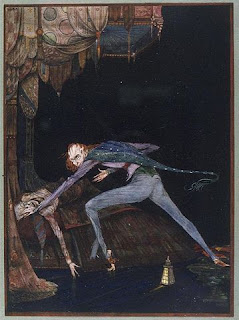In Moonraker (1979), we learn that a deadly-tipped pen, which Bond finds on Holly Goodhead's hotel dressing table, is standard CIA issue. In Octopussy (1983), a fountain pen made by Mont Blanc is multi-functional, containing a highly concentrated mixture of nitric and hydrochloric acid ('wonderful for poison pen letters') and an earpiece to a listening device. Coincidentally, Never Say Never Again, the rival Bond film released in the same year, also includes a fountain pen among its gadgets; that one is able to release an explosive charge.
The explosive pen was reinvented for GoldenEye (1995) and used to great dramatic and comic effect. The film featured a Parker Jotter ballpoint, which contains a class-four grenade that is armed with three clicks of end button and disarmed with three more. (I've never looked at a ballpoint pen in quite the same way since, and on idly clicking the end of one, often wonder whether it's about to go off.)
 |
| Q demonstrates the 'pen grenade' in GoldenEye |
 |
| Mercenary John Haddad demonstrates the 'pen grenade' in Wild Geese II |
 |
| One of Charles Fraser-Smith's gadgets |
The use of trick pens continued into the Cold War. In an interview with Ian Fleming published in 1965, Bernard Hutton, an expert on Soviet espionage, revealed how Soviet spies used dynamite-filled fountain pens for the purpose of assassination.
The gadget-filled pen is so well established in espionage lore that today the idea might seem hackneyed. This may explain Q's comment to Bond in Skyfall (2012): 'Were you expecting an exploding pen? We don't really go in for that any more.'
And the idea of trick pens has been subverted in other films. During the tank sequence in Indiana Jones and the Last Crusade (1989), Professor Henry Jones (Sean Connery) shakes off a German soldier – who then stumbles and knocks himself out – by squirting ink from his fountain pen into the soldier's face. More recently, in The Bourne Identity (2002), Jason Bourne uses a biro as a stabbing weapon.
In a way dismissing the notion of the sort of gadgets seen in the Bond films, both cases demonstrate that the ordinary can become extraordinary; you don't need to fill a pen with explosives to turn it into a deadly weapon.













